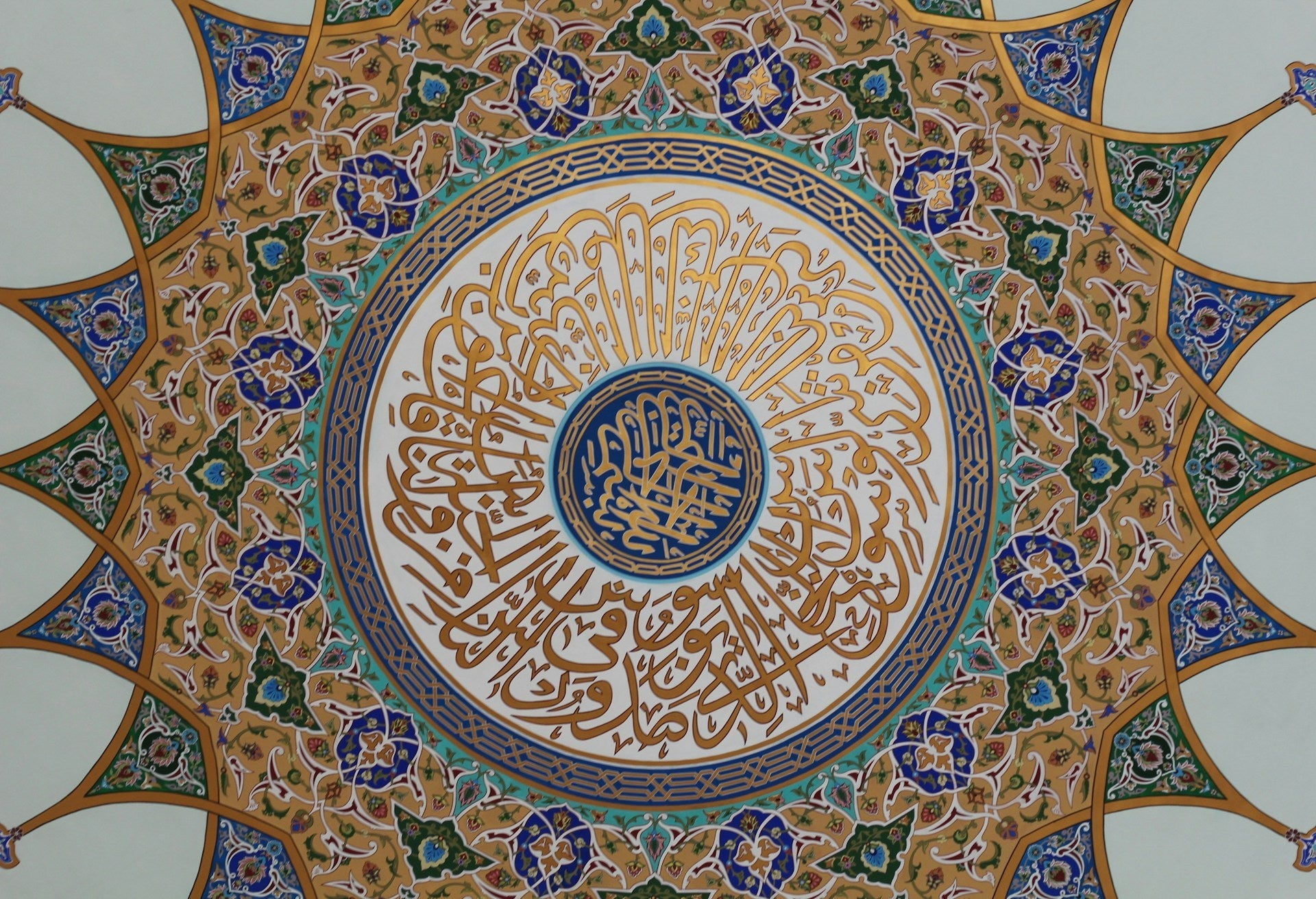Choosing colors for Modern Islamic Art Paintings can be an exciting journey that enhances the beauty and meaning within a home. From rich blues to vibrant reds, the hues found in Islamic art aren’t merely decorative; they hold symbolic significance that can transform a space. Whether you want to capture the calm serenity of a mosque or the vibrant energy of a market, colors play a key role. When you choose the right shades, your art doesn’t just decorate—it communicates.
Imagine walking into a room where a turquoise painting transports you to the tranquil courtyards of a distant palace. Or perhaps a gold-accented piece evokes the rich traditions that have traveled through time. Color selection isn’t just about matching your sofa; it’s about curating an experience. By understanding how different shades correspond to various feelings and traditions, you can select artwork that tells your story and connects you with a wider cultural narrative.
Understanding the Color Palette in Islamic Art
Islamic art traditionally embraces a rich palette that resonates deeply with cultural and spiritual meanings. Colors like blue, green, gold, and red often hold particular significance. For example:
- Blue often signifies spirituality and calmness. It's frequently seen in the intricate tiles and mosaics of mosques.
- Green is cherished for its connection to nature and resurrection, symbolizing life and paradise.
- Gold represents the divine and is used to highlight the elegance and prominence of sacred texts.
- Red embodies vitality and can bring warmth and energy to an art piece.
While these colors are staples in Islamic art, modern interpretations allow for broader experimentation. Artists today often blend traditional hues with more contemporary ones, producing artworks that honor the past while appealing to modern tastes. For instance, pairing the serene blues and greens with bold metallics like silver or rose gold can create a striking contrast that showcases both historical and modern influences.
Experimenting with color palettes not only helps in matching personal decor styles but also allows for a celebration of Islamic heritage in fresh, innovative ways. When you choose your palette wisely, you're not just decorating; you're creating a dialogue between the past and present, guiding the colors to reflect both the timeless values of Islamic art and your individual perspective.
Tips for Choosing Colors to Match Your Space
Selecting colors for Modern Islamic Art Paintings that complement your home decor can truly transform a space. It's essential to consider how your art pieces will blend with your current interior. A well-chosen painting can highlight features of a room, create harmony, or add a splash of interest. Here are some tips to guide your choice:
- Think About the Room Size: In smaller rooms, lighter colors can make the space feel open, while a bold or darker-colored piece can add coziness to more spacious environments.
- Evaluate Lighting: Natural and artificial light impacts how colors appear, so observe how the light changes throughout the day in the room where the painting will be displayed.
- Consider Existing Colors: Use complementary colors that harmonize with your furniture and textiles. This way, the art becomes a part of the room's story.
Visual tools, like color wheels or online applications, can be really handy. They help you to see how different shades play off each other, giving you the confidence to choose color combinations that suit your taste and requirements.
Harmonizing Modern and Traditional Elements
Balancing modern influences with traditional Islamic patterns is an art form in itself. Start by choosing a color scheme that reflects both personal style and cultural heritage. The key is to integrate flashy, vibrant colors with subtle traditional elements without overshadowing the core designs.
One approach is to use bold, expressive colors in moderation. For example, vivid accents in a few decorative spots can energize a room while ensuring the traditional patterns remain the focal point. To further amplify the effect, consider how the use of neutral backgrounds, such as whites or grays, allows colors to pop without competing for attention.
Creating this balance not only respects Islamic artistic traditions but also celebrates your personal aesthetic. It's a process of customizing what has been passed down through ages, making it right for today's living spaces.
Experimenting with Seasonal Color Trends
Keeping your color choices in sync with seasonal changes can jazz up your decor and offer invigorating vibes. As we approach July 2025, bright, lively colors that reflect summer's embrace can rejuvenate your living environment. Consider hues like sunny yellows, fresh greens, and ocean blues, which capture the essence of the season.
Seasonal swapping is quite simple. Rotate paintings to match the season's spirit or introduce new elements that highlight current trends. This could involve adjusting the background or introducing new textures alongside your Modern Islamic Art Paintings, offering a dynamic transformation without a huge redesign.
Weaving Art into Everyday Life
Integrating Islamic Art with your personal decor isn't just a visual endeavor; it's about creating a space that reflects and resonates with who you are. By choosing your colors thoughtfully, considering space and lighting, and embracing both modern and traditional elements, you can craft a home filled with stories and beauty.
Whether celebrating the vibrant hues of summer or finding peace in more subdued tones, you have the opportunity to make colors a fundamental part of an enriching living environment. Trust in your preferences, follow what inspires you, and let each piece you bring into your home serve as a bridge between past and present.
Explore a range of options and bring the transformative power of color into your home with Modern Islamic Art Paintings. At Modern Wall Art, find inspiration for every room and let each piece reflect your personal touch and cultural heritage. Discover how thoughtful color choices can elevate your space while celebrating art that resonates with meaning and beauty.
